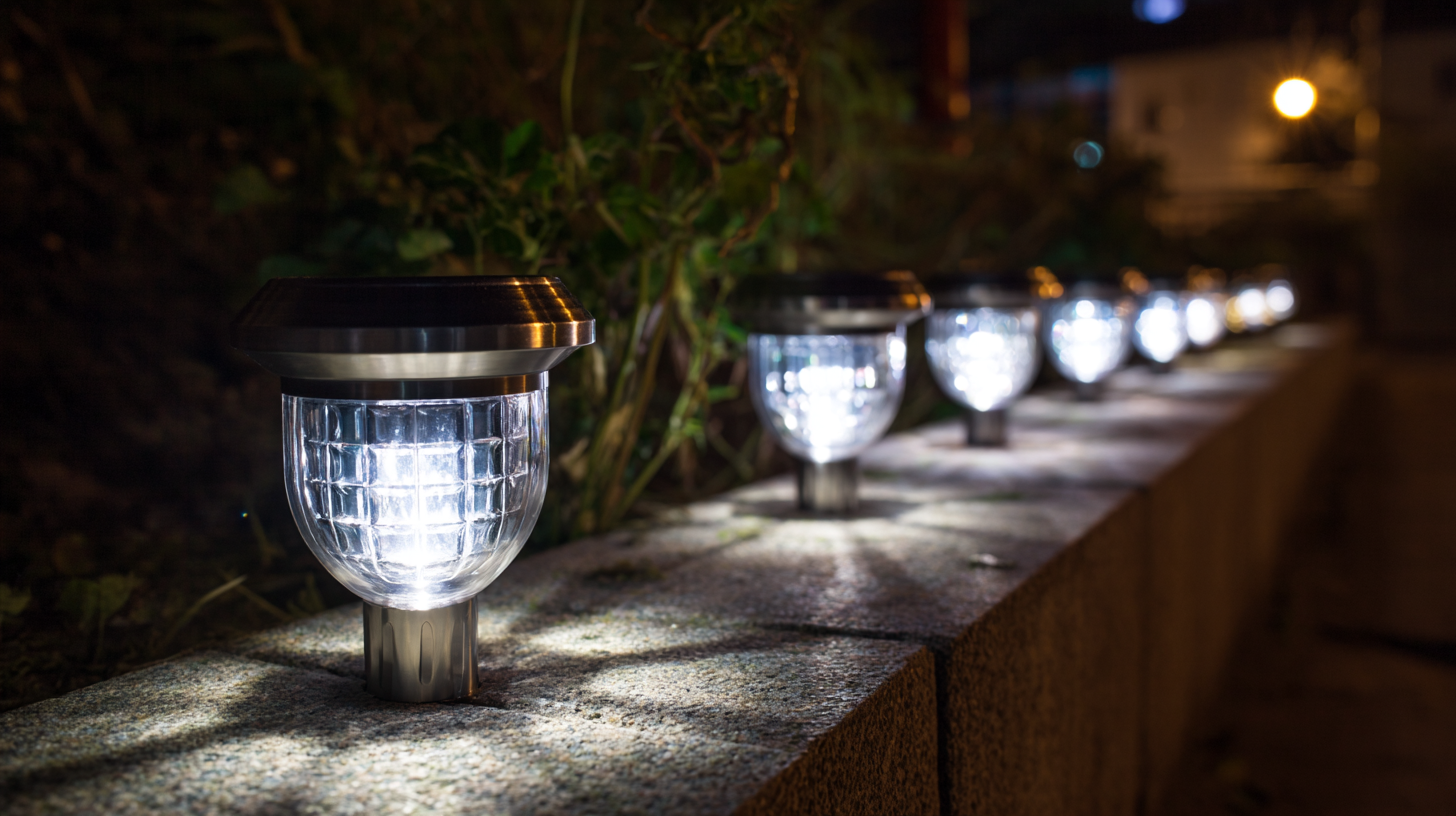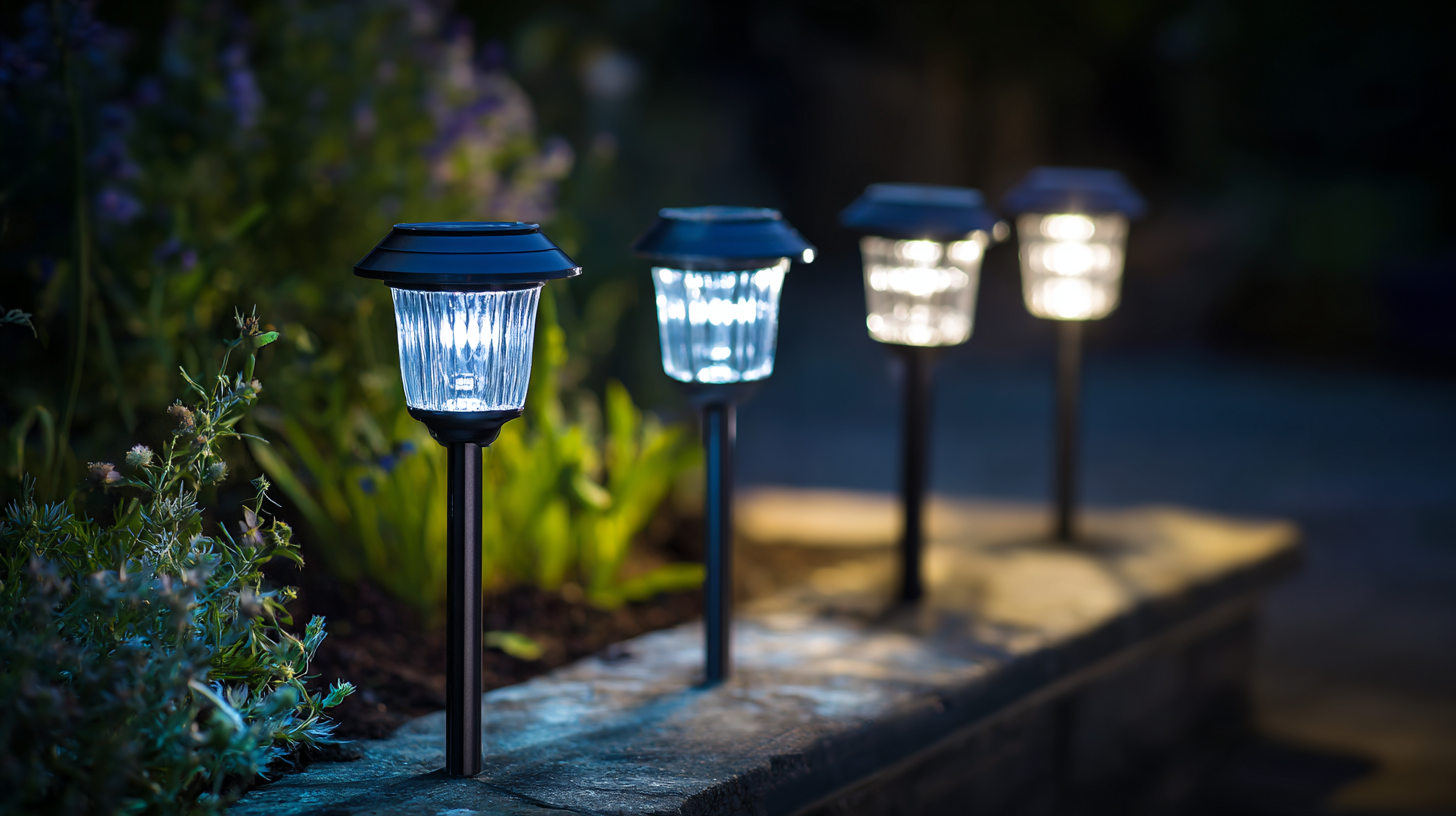Ultimate Guide to Comparing Best Led Solar Lights Outdoor for Maximum Efficiency and Performance
When it comes to enhancing outdoor spaces while being environmentally conscious, choosing the right Led Solar Lights Outdoor is essential. These innovative lighting solutions not only help to illuminate pathways and gardens but also significantly reduce electricity costs and reliance on traditional power sources. However, with a plethora of options available in the market, it can be overwhelming for consumers to identify the best products that offer maximum efficiency and performance. This ultimate guide aims to simplify the selection process by providing insightful comparisons of top-rated Led Solar Lights Outdoor, while also highlighting the key factors to consider when choosing a quality manufacturer. Whether you are looking to enhance your home's curb appeal or seeking reliable lighting for outdoor events, understanding how to evaluate these solar lights will empower you to make an informed decision and invest in the best options available.

Common Issues with Solar LED Lights and How to Resolve Them
When investing in solar LED lights for outdoor use, users often encounter common issues that can hinder their efficiency and performance. One of the primary concerns is inadequate sunlight exposure, which can lead to insufficient charging during the day. To resolve this, ensure your solar lights are strategically positioned in areas that receive ample sunlight, free from shadows cast by trees or structures. Regularly cleaning the solar panels also helps maximize energy absorption, allowing the lights to function optimally throughout the night.
Another frequent issue is the degradation of battery performance over time. Many solar LED lights use rechargeable batteries that may lose capacity due to prolonged use or adverse weather conditions. To mitigate this, consider selecting models with high-quality batteries, and follow the manufacturer's recommendations for maintenance. Additionally, investing in lights with replaceable battery options ensures a longer lifespan and consistent performance. By being proactive about these common problems, you can enjoy reliable and efficient solar lighting in your outdoor spaces.
Ultimate Guide to Comparing Best Led Solar Lights Outdoor for Maximum Efficiency and Performance
| Feature | Option 1 | Option 2 | Option 3 |
|---|---|---|---|
| Brightness (Lumens) | 300 | 600 | 800 |
| Battery Type | Lithium Ion | Lead Acid | Lithium Phosphate |
| Charging Time (Hours) | 6 | 8 | 5 |
| Light Duration (Hours) | 8 | 12 | 10 |
| Material | Plastic | Aluminum | Steel |
| Water Resistance | IP65 | IP67 | IP68 |
| Sensor Type | PIR | Dual Sensor | Motion and Light |
| Price ($) | 25 | 40 | 55 |
Maximizing Solar Efficiency: Challenges Faced by Outdoor Lighting
Maximizing solar efficiency in outdoor lighting systems poses numerous challenges, particularly for solar-powered LED lights. One major issue is battery longevity, as many homeowners find that their solar lights sacrifice performance for convenience. According to recent studies, the efficiency of photovoltaic (PV) systems can be significantly impacted by environmental conditions, with extreme temperatures causing up to a 25% reduction in output. To combat this, integrating advanced cooling methods with solar panels can maintain optimal performance even in harsh climates.
To enhance the efficiency of your outdoor solar lights, consider implementing Maximum Power Point Tracking (MPPT) techniques, which can optimize the power output from solar panels during varying sunlight conditions. Research indicates that using smart technologies, such as neural network optimization, can further increase efficiency by dynamically adjusting to environmental changes.
Tips: Always position your solar lights in areas with maximum sunlight exposure throughout the day to ensure optimal charging. Regularly clean the solar panels to remove dirt and debris that can obstruct sunlight, thus improving the system's overall efficiency.
Performance Problems: Understanding the Limitations of Solar LEDs
When it comes to outdoor lighting solutions, solar LED lights have become increasingly popular due to their sustainability and low operating costs. However, it is essential to understand the limitations of these lights to ensure optimal performance. One of the primary performance problems associated with solar LEDs is their dependency on sunlight. In regions with limited sunlight or extended cloudy days, the charging efficiency drops significantly, resulting in less illumination during the night.
Another critical consideration is the quality of solar cells used in the lights. Cheaper models often come with inferior cells that can degrade over time, leading to diminished output. This decline can be exacerbated in colder climates, where extreme temperatures can further impact the efficiency of solar components. Therefore, selecting high-quality solar LED lights is crucial to ensuring that they deliver the desired brightness and longevity in performance, making it imperative for consumers to compare products carefully based on their specific environmental conditions and needs.

Technical Glitches: Troubleshooting Solar Light Functionality Issues
When it comes to enhancing outdoor spaces with LED solar lights, functionality issues can sometimes arise, hindering performance and efficiency. Troubleshooting technical glitches is crucial for ensuring these eco-friendly fixtures illuminate your yard as intended. First, checking the solar panels for dirt or debris is essential, as even a thin layer can obstruct sunlight absorption. Regular cleaning will maximize performance. Additionally, ensure that the batteries are fully charged and functioning properly; replacing old or faulty batteries will often resolve dimming issues.
Another common problem is the malfunction of the sensor, which may prevent the lights from activating at dusk. If your lights are not turning on at night, inspect the sensor's position and the surrounding environment. It could be that external lights are interfering with the light sensor's operation, or that the sensor is simply misaligned. Adjusting the angle of the sensor or relocating the solar light may help restore its functionality. Remember, regular maintenance and a keen eye for potential issues can enhance the lifespan and efficiency of your LED solar lights, creating a consistently bright and appealing outdoor atmosphere.
Comparison of LED Solar Lights Performance
This chart compares the efficiency and functionality issues of various LED solar lights based on real-world metrics such as brightness (in lumens), battery life (in hours), and average operational issues reported per 100 units.
Enhancing Durability: Addressing Weather-Related Problems in Solar Lights
When selecting LED solar lights for outdoor use, durability is a crucial factor, especially when considering the weather-related challenges they may face. Rain, snow, and extreme temperatures can significantly impact the performance and lifespan of solar lights. It is essential to choose models that are built to withstand harsh weather conditions. Look for lights with an IP rating of at least 65, which signifies they are protected against dust and low-pressure water jets.

Additionally, you can enhance the durability of your solar lights by regularly maintaining them. Clean the solar panels to ensure they receive maximum sunlight, as any dirt or debris can hinder their efficiency. Check the connections and replace any corroded components to avoid performance issues.
Finally, consider positioning your solar lights thoughtfully. Installing them in areas that are shielded from direct impact from heavy rain, wind, or snow can prolong their lifespan. Use protective casings or mounts that can anchor the lights firmly and reduce the risk of damage caused by severe weather events. By taking these proactive measures, you can significantly improve the efficiency and durability of your outdoor solar lighting solutions.
